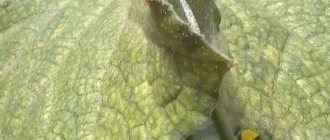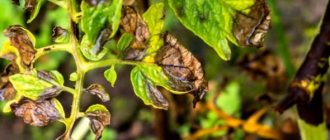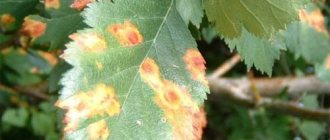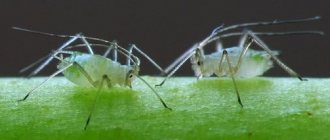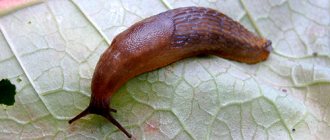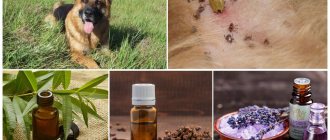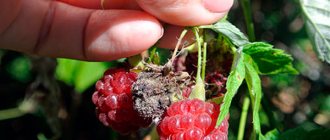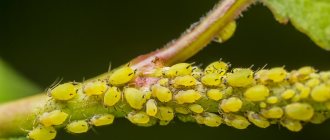Insects overwhelm a person everywhere - at home, in an apartment, and in the country. This is especially true for gardeners-gardeners. Their main enemy in the garden is aphids. In greenhouses, such a misfortune has to be fought in the spring, and in open ground - starting from the middle of summer. Unfortunately, almost every farmer has to ask at a certain stage the question: aphids on cucumbers - how to fight to save the plants.
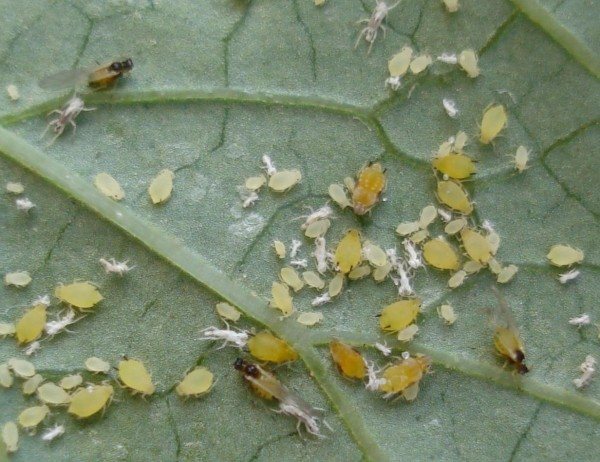
Aphids on cucumbers in different stages of development - eggs, juveniles and sexually mature
Why aphids are dangerous
Aphids on cucumbers in a greenhouse or just in the garden are often referred to as melons. Its appearance is first of all signaled by the leaves of plants - wither and sag. It is enough just to turn the leaf over and the colonies of parasites are determined with the naked eye. Aphids spread throughout the plant, practically covering the flowers, ovary, young shoots.
Attention! When the first signs of aphids are detected, emergency measures must be taken, since the parasite spreads very quickly and is able to leave the farmer without a crop at all. Scientists argue that if it were not for the natural enemies of aphids, such as the ladybug, it would have destroyed all plants on earth, since it is omnivorous.
Leaf aphids feed on cell sap. When starting a meal, the insect pierces the flesh of the plant, sucks out the juice and at the same time secretes poison. It is under his influence that the sheets curl. This is not done by chance - in the resulting "houses", the aphid hides from birds and other enemies, reproduces there and the population is preserved.
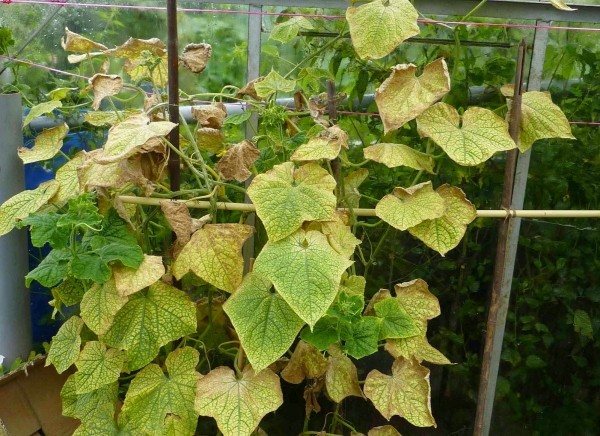

This is what aphid-infected cucumber looks like - the crop is lost
In addition, it is known that aphids are carriers of various viruses. As a result, plants not only suffer from the insect itself, but are also affected by diseases.
Pest symptoms
At the initial stages of the defeat of the culture, it can be difficult to notice small bugs. It is important to pay attention to the characteristic signs in time:
- the plant has a general sluggish appearance, lags behind in development and growth;
- leaves dry and curl, yellow-brown spots appear on them;
- the leaves become sticky to the touch due to the release of honeydew by aphids;
- the ovaries dry up and fall off;
- young shoots turn yellow and die off;
- a large number of ants appear on the site.
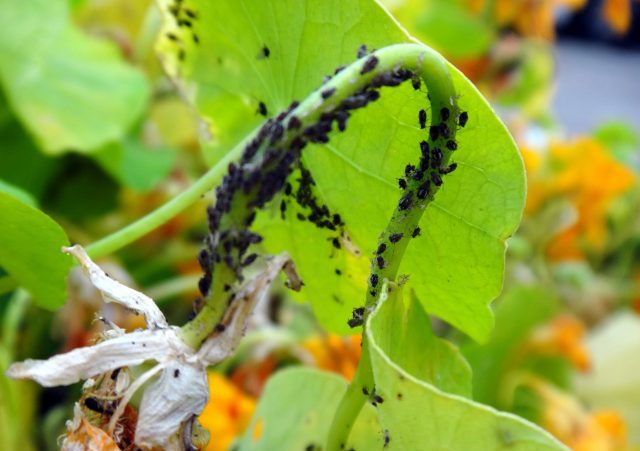

When aphids appear, the plant looks sluggish.
In the future, it is very easy to detect the pest. Aphids are found in whole heaps everywhere: on leaves, stems, young shoots and ovaries. High humidity and temperature contribute to active reproduction and growth of populations.
Breeding features
White or black aphids on cucumbers are insects that do not exceed 6 mm in length. It adapts to all climatic conditions. It hibernates in the state of eggs and it is during this period that the fight against it in vegetable farms is most effective. The asexual uterus (parthenogenesis) is responsible for the continuation of the genus. When the time comes, the "virgin" female crawls out of the egg. Its distinctive feature is its wingless structure, although in some individuals they can still grow. Males appear in the population towards the end of summer. Males and females mate, the latter lay eggs, after which the entire sexual generation dies off.
Signs of defeat
At the beginning of the season, it is quite difficult to see small green bugs merging with the green mass. but as the pest spreads, the first signs appear:
- delayed growth and development of cucumbers;
- delayed flowering;
- wilting of the upper foliage;
- twisting and drying of leaves;
- honeydew on greenery;
- accumulation of ants on the site;
- falling off flower ovaries;
- wilting of the lower leaves;
- black or green bugs on the back of the foliage.
Ways to fight
In order not to puzzle over how to get rid of aphids on cucumbers, it is necessary to take measures to prevent its appearance:
- Initially, it is worth choosing varieties of cucumbers that are resistant to aphids.
- In greenhouses, the ventilation openings must be tightened with fine mesh or gauze.
- In open beds, plants can also be covered with a non-woven cloth.


If a ladybug appears on the beds, the aphid will be destroyed
Causes of occurrence
Many factors contribute to the appearance of this type of dangerous pests in the areas. Therefore, it is necessary to start the fight with the elimination of all possible causes of the origin of these insects in the beds:
- The ants feed on the sweet sap (honeydew) formed during the life of aphids, which accumulates on the underside of the leaves. They transfer insects to young plants, where females begin laying eggs. The ants also carry the larvae, spreading them around the site.
- Failure to comply with agrotechnical conditions is a favorable factor for the appearance of aphids:
- dense and frequent planting of cucumbers;
- weeding not carried out on time;
- high nitrogen content in the soil;
- poor ventilation in greenhouses;
- high humidity;
- lack of direct sunlight.
- This type of pest tolerates the winter period on weeds. Therefore, it is important not to let the grass grow in the area. It is also necessary to remove the torn weeds from the beds immediately after weeding.
"Grandma's" advice
No tobacco!
Of course, there are folk remedies for the destruction of aphids, which have traditionally been used and are now used by gardeners. However, as it turned out, not all of them are valid. For example: tobacco is soaked for 8-10 hours in cold water and cucumbers are sprayed with this infusion as a preventive measure. Everything seems to be clear - many insects are afraid of tobacco. But, modern views on the harm of nicotine, undoubtedly present in such a composition, have become the reason for the rejection of such a remedy. Rather, it is allowed to process ornamental plants that are not used for food.
Other herbal infusions - you can!
To prepare a composition against cucumber aphids, the following are suitable:
- potato tops;
- celandine - leaves + stems;
- garlic;
- dandelions - whole;
- hot pepper;
- onion peel;
- horse sorrel;
- wood ash.
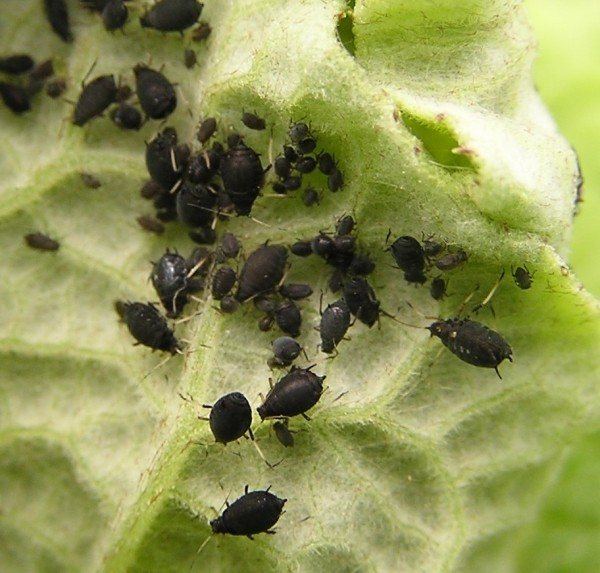

Infection of cucumbers with black aphids can be eliminated by folk methods - the main thing is to timely detect the problem
In order for the plant infusions to work effectively, it is imperative to add soap - a household solution or liquid. When spraying, it should be borne in mind that aphids prefer the lower surfaces of the leaves. It will be necessary to apply such a remedy once a week until the insects are completely destroyed.
Important! Plant infusions are not chemicals - this is a fact, however, if you "go too far" with the concentration, it can lead to plant burns. Further, destroying aphids, you can destroy its natural enemies. As a result, aphids, which reproduce at a “Stakhanov's” pace, can return to a cleared area very quickly, but it will take much longer to revive the population of spider bugs.
Know how
Today, the gardener has the opportunity to use a more modern folk remedy for aphids on cucumbers:
- Vodka. A spray bottle is put on the bottle and aphid-infected plants are treated. According to our readers' reviews, the effect is great.Here are just the cost of such a product at the present time, if you take even the cheapest bottle of vodka, frankly "bites".
- Coca-Cola. And again, everything is elementary - we put on the sprayer and go ahead to fight the parasite. Its destructiveness for aphids is explained by the presence of phosphoric acid in the component composition.
- Essential oil + soda. The composition is prepared on the basis of 1 standard 70-gram glass of 15 drops of fragrant essential oil - cedar, lavender, tea tree. Then this mixture is added to 2 liters of water. It is enough to spray 3 times at intervals of every other day and the aphid will be defeated.


Coca-Cola kills aphids - proven in practice
Possible problems and errors
The problem with growing cucumbers and fighting aphids is adding top dressing.
Systematic fertilization increases the stability and resistance of vegetable crops, increases the ability to renew tissues. However, excessive addition of nitrogenous fertilizers has the opposite effect. Vegetable crops oversaturated with nitrates "get fat", that is, they continuously form new leaves and shoots, young juicy shoots are unusually attracted to aphids.
Potassium-phosphorus fertilizers, on the contrary, make the leaves coarse and contribute to the production of biogenic substances in them that increase the osmotic pressure of the cell sap, as a result, cucumbers become unattractive for sucking parasites.
It is important to remember that when choosing what to lime the aphids that appear on cucumbers, proceed from the scale of the damage to the plantings. The use of powerful systemic poisons is justified only in case of colossal damage to vegetable crops by these pests. In all other situations, for cleaning plants, they are limited to the use of folk remedies, herbal teas. Of course, fighting aphids with such means is not as effective as treating them with pesticides, but in the early stages of infection of vegetable crops, folk remedies give excellent results.
Chemical biological products
- "Bitoxibacillin";
- Fitoverm;
- Aktofit.
Important! Drugs in this category are harmless to humans. Within a couple of days after spraying, cucumbers can be safely used for food.
Foliar fertilizing with phosphorus-potassium fertilizers will also help to overcome aphids on cucumbers. They are applied once every 7 days until the insects are completely destroyed. The solution used can be easily prepared by yourself: 20 g of superphosphate + 10 g of potassium chloride + 10 water.
A source
Preventive measures
Preventive measures will help prevent the reappearance of pests:
in the fall, all plant tops and weeds should be removed from the site; the site is deeply dug up and disinfected with a solution of potassium permanganate or copper sulfate; it is important to observe crop rotation; when planting bushes, the recommended distance must be observed, avoiding thickening of the plantings; the beds must be weeded regularly, avoiding the growth of weeds; damaged leaves must be removed from cucumber bushes in time; it is recommended to plant marigolds, garlic, calendula, spicy grass near the cucumber beds; prevention also consists in the timely fight against the appearance of ants; you need to plant cucumbers away from anthills.
How to process
Treatment of cucumbers with chemicals is carried out using a sprayer in accordance with the recommendations of the instructions. It is better to choose a sunny day without expected precipitation, because to achieve the maximum effect, it will take from 8 to 10 hours of interaction of the insecticide with the surface of the plant. Spraying is carried out in the morning, leaves are sprinkled on both sides. Since the remnants of drugs cannot be stored, their required amount should be accurately calculated. Re-treatment with a chemical preparation is repeated after 10 days.
Biological preparations are used for both therapeutic and prophylactic purposes. Their solutions are prepared according to the instructions. The bushes are sprayed in clear weather.The interval between treatments during the growing season should be 21 days.
Aphid remedy on cucumbers. Several folk options
It should be said that folk methods of dealing with these insects in different cultures are very similar. That is, there are several popular recipes for such products that are quite applicable not only for cucumbers, but also for other vegetable crops. In addition to the vegetable garden, these same tools work well in the garden, where aphids also live in abundance. So, remember, maybe these recipes will be useful to you for processing other crops.
Cooking infusion of bitter pepper
Pepper for this infusion, we need in pods - 30-40 grams. It will need to be cut into pieces (be careful, and after this procedure, be sure to wash your hands well), and prepare another 200 grams of tobacco dust. Next, we just throw these two components into a bucket of water (the standard volume is 10 liters), and there we dilute them well. The infusion will have to stand for about a day, after which, it is stirred again and a couple more components are added there. The first is liquid soap (absolutely any, a tablespoon or two), and, preferably, half a glass of ash. After that, we stir everything again, and we carry out the very procedure for spraying the foliage of the cucumbers. At the same time, one must proceed from the fact that a liter or, maximally, two should be consumed per square meter of infusion. If from the first time it was not possible to completely get rid of the aphids, then use the same infusion to spray again, in a week.
Cooking infusion of tar soap
This type of infusion also helps a lot in the fight against aphids. We need tar soap in the form of shavings - about 10 grams. This amount of soap shavings will be enough for a liter of water. Our task is to dilute it well there, and after that it is already possible to carry out processing, that is, you will just need to sprinkle the infusion on the leaves.
Infusion of tobacco
We will prepare the next infusion for spraying cucumbers from tobacco. There is such a popular brand of rather "hard" cigarettes - "Prima". Here we just need a pack of such cigarettes, or something similar to them. We dilute the tobacco from the pack with a liter of water, and after that, we also boil for about 15 minutes.


After cooling down, our concentrated infusion is ready, but it must be diluted with another liter of water. After cultivation, it is already completely suitable for spraying cucumbers. Although, the infusion can be more concentrated.
Cooking infusion of horseradish roots
We take a shovel and go to dig horseradish. We need roots, 5-7 pieces. If you have nowhere to dig it, then you have to buy horseradish. The roots will need to be well crushed, and already in this form, put them in a three liter jar, where, after that, warm water is poured. When the infusion has stood for 2-3 hours, it will need to be poured into another container (the same can will do). Fill the horseradish that remains in the jar with water again. Again, we maintain about the same, and then, we combine both of these infusions.
Now, pour a glass of infusion, and dilute it in half a bucket of water. This is already the final solution, which will need to be sprayed on the cucumbers.
We insist garlic
The last option for today, which also very well helps to solve our today's problem, namely, to expel aphids from cucumbers.
To prepare it, take any suitable container with a lid. Its volume can be determined based on the fact that to prepare the infusion, we will be on a liter of water, where it will be necessary to cut 200 grams of garlic. The infusion should stand under the lid for 5 days. When it is ready, pour out 300 ml, and dilute this amount in a 10-liter bucket of water. After that, the cucumbers can already be sprayed.
And this video will tell you about another folk remedy with which you can process cucumbers from aphids. It's very simple, take a look.

